People don’t generally assume that birds are smart. You hear the phrase “bird brain” for a reason, after all! However, our feathered friends may be much more intelligent than we have given them credit for. The truth is that many birds have astounding abilities. They may not be as smart as the average adult human, but many birds have been shown to have cognitive abilities comparable to those of young children. You might be quite surprised when you hear about the smartest birds in the world. However, the list of the smartest birds in the United States is also quite impressive. Read on to learn all about the smartest birds flying around the United States!
1. Crows
Crows are the smartest birds in the United States, with an intelligence level that may even be comparable to that of humans. In fact, some research has shown them to be smarter than some apes and only a little bit less intelligent than humans. In addition, they have a brain-to-body weight ratio comparable to that of the great apes and cetaceans (porpoises, dolphins, and whales).
Scientists have found that crows have numbers of neurons in their brains comparable to those of monkey species. However, since their heads are smaller, the neurons are far more compact. This results in more communication between neurons in crows, indicating that they may actually be smarter than monkeys.
Crows actually make their own tools and are capable of reason. They understand cause and effect. Crows can remember human faces and count to five. There is even evidence that they are able to solve puzzles.
Crows are part of the Corvus genus, along with ravens, jays, and magpies. There are approximately 32 species of crows, as well as multiple subspecies. In the United States, there are three species: the fish crow, northwestern crow, and American crow.
The Hawaiian crow used to be a part of this list but is now extinct in the wild. However, these crows are being bred at the San Diego Zoo.
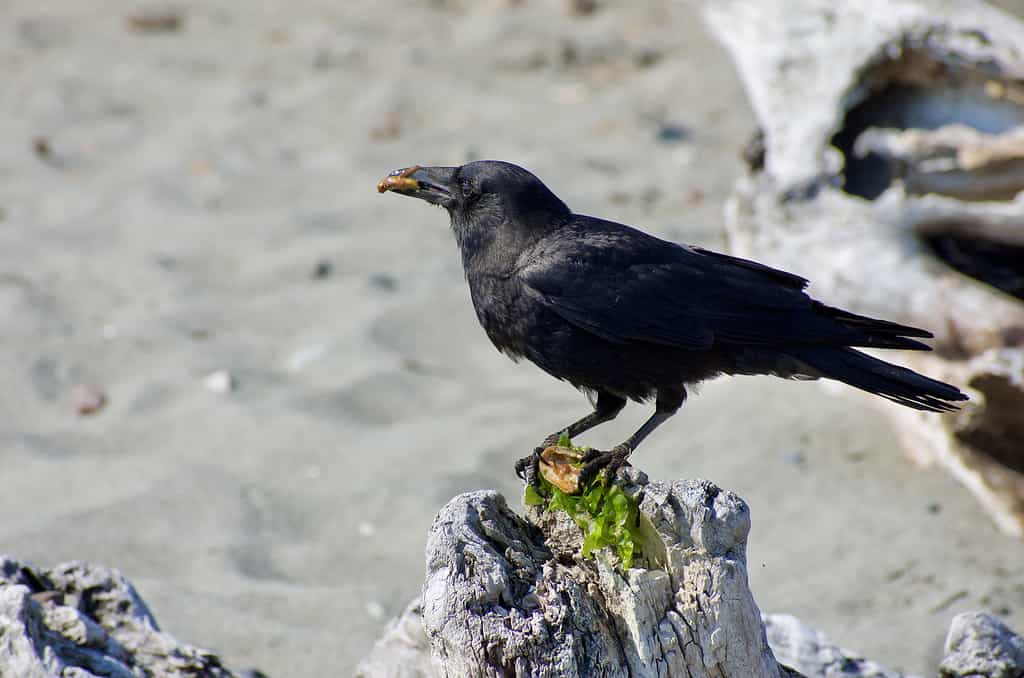
Crows are the smartest birds in the United States.
©iStock.com/DanielLacy
2. Ravens
Ravens aren’t quite as smart as crows, but they’re pretty close. Their hunting strategies alone are very impressive. Ravens tend to work in pairs, with one creating a diversion for the parent of their prey and the other grabbing the baby animal or egg.
They are adept problem-solvers and understand cause and effect. Ravens follow gunshot sounds, as they have learned to associate them with scavenging opportunities.
Ravens are also capable of mimicry. For example, some of the smartest ravens have been taught in captivity to imitate the human voice and speak words.
Along with crows, ravens are part of the Corvus genus. Out of the ten species of ravens in the world, there are two in the united states. These are the Chihuahuan raven (Corvus cryptoleucus) and the common raven (Corvus corax).
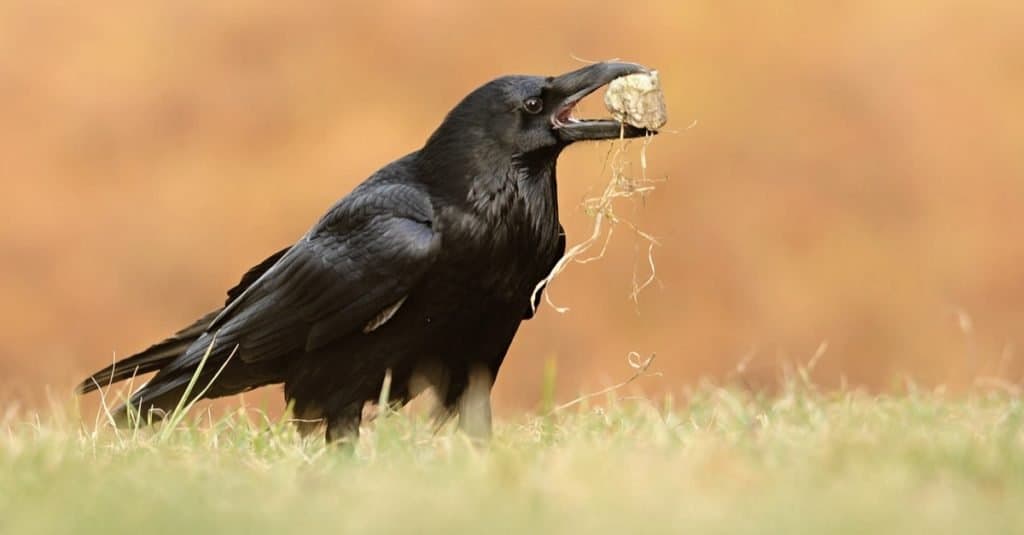
Ravens aren’t quite as smart as crows, but they’re pretty close.
©Michal Pesata/Shutterstock.com
3. Jays
Jays are known for being very energetic, as well as highly intelligent. There are 40 species of jays in the world, eight of which reside in the United States. These include the Mexican jay, Western scrub-jay, Florida scrub-jay, pinyon jay, Steller’s jay, gray jay, green jay, and blue jay.
Other than humans, scrub jays are the only animals that plan their actions based on future emotions. They plan their breakfasts on the previous day depending on what they think they are going to want and how much.
They have also been known to emulate one another’s behaviors. One captive blue jay used to scrap paper in his cage to reach a pile of food on the other side of the bars. There were other jays who observed this and started using the same tactic themselves.
Blue jays can imitate the sounds of many other birds and even cell phone ringtones. Likewise, Steller’s jays can mimic wild birds, in addition to squirrels, chickens, dogs, and cats.
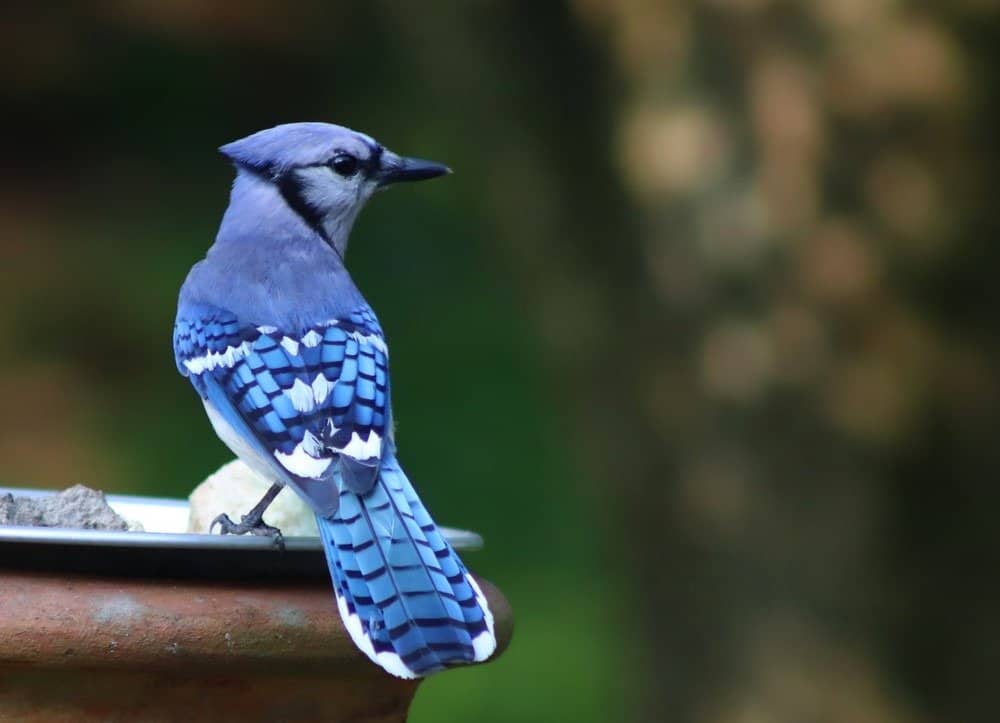
Jays are known for being very energetic, as well as highly intelligent.
©Eleanor McDonie/Shutterstock.com
4. Clark’s Nutcracker
There are three species of nutcrackers: the large spotted nutcracker, the spotted nutcracker, and Clark’s nutcracker. The last one on that list has by far the most intelligence of the three species.
Clark’s nutcracker resides in the western mountains of the United States. Like many birds, they spend summers collecting and storing pine seeds. However, what sets this bird apart is the fact that they only store three or four seeds in a given location.
One bird needs a minimum of 30,000 seeds for the winter. This means that they can have as many as 10,000 hiding places, all of which they remember by associating the locations with landmarks.
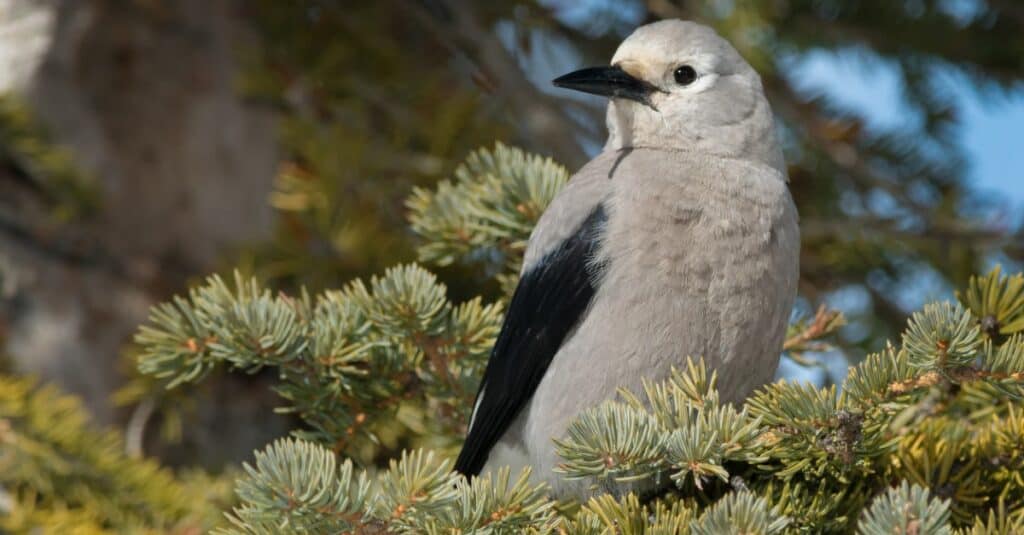
Clark’s nutcracker stores as many as 30,000 pine seeds in one season.
©iStock.com/PaulReevesPhotography
Smartest Birds in the United States: Honorable Mentions
Much like jays, woodpeckers also hoard nuts to eat later. This indicates formidable long-term memory.
In a manner similar to ravens, wild turkeys work together for their food. Wild turkeys line up wing to wing and walk in rows. They are aware that they can flush a greater number of insects this way than if they were walking by themselves.
Just like crows, robins, and northern mockingbirds are able to recognize individual humans. They are able to recognize members of potential predators. Not only this, but they actually remember individuals. This enables them to mark these individuals for a defensive attack later if necessary.
Green herons are also similar to crows in that they use tools. Specifically, they use little pieces of bread that they find (which humans have typically tossed on the ground for ducks) as bait to bring small fish to the surface.
Bald eagles are similar to crows and ravens in their ability to solve problems. If they aren’t able to fly with their prey, they will sometimes swim with them across the water’s surface. They also know how to break through ice to go fishing. The eagles jump up and down on it and use their beaks to crack it.
Seagulls fly high, carrying crustacean and mollusk prey, and drop them to crack their shells.
Mockingbirds are exceptionally talented mimics, hence their name. Like some jays and ravens, they deliver astounding imitations of other animals.
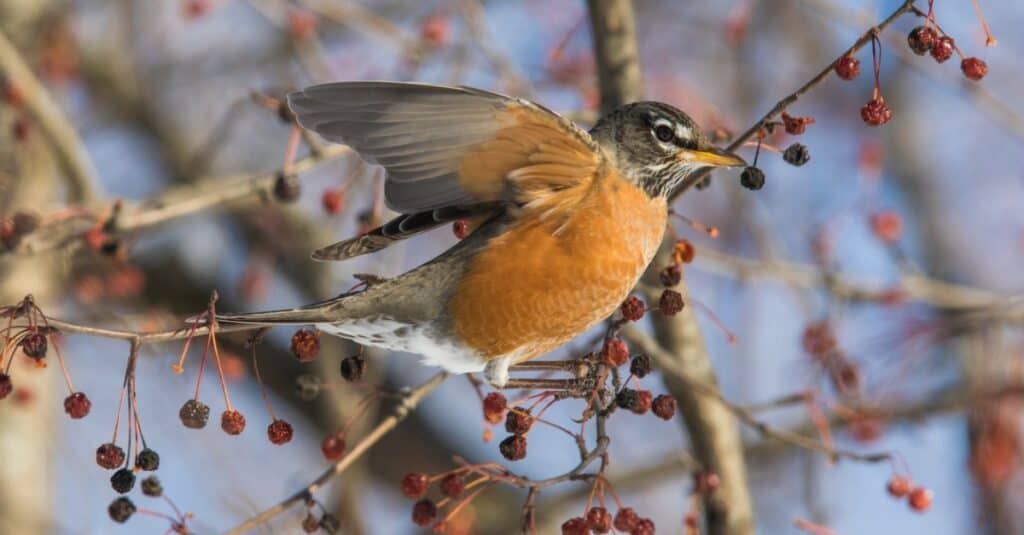
American robins can recognize and remember individual humans.
©iStock.com/mirceax
The photo featured at the top of this post is © jpetersen/Shutterstock.com
Thank you for reading! Have some feedback for us? Contact the AZ Animals editorial team.






